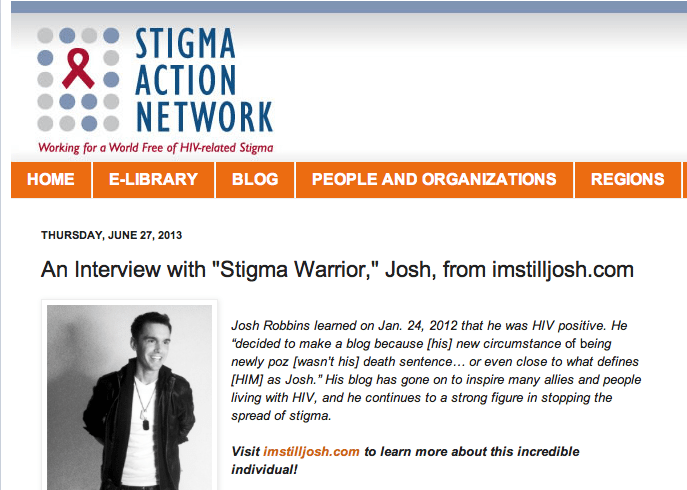Fantastic infographic that is shareable about epidemics of America that was recently shared with me and I wanted to pass this along! I love these new, shareable social tools… great stuff!
Thanks to these guys for bringing this cool tool to my attention!
An infographic by the team at Online Masters In Public Health
Epidemics of America
Diseases have ravaged human populations for thousands of years, bringing down kings and kingdoms. How have epidemics affected life in the United States?
Smallpox
The biggest killer introduced to the Americas by Europeans after the 1500’s
dropped the population of Native Americans from 100 million to just 5-10 million
Caused by the variola virus
Symptoms: high fevers, body aches and a rash
The rash evolves from fluid-filled bumps, to scabs, to pitted scars
Most commonly spread through direct contact with an infected person’s skin or body fluids
Can be airborne
In 1796, a vaccine for smallpox was created, but the disease continued to spread
In 1967, the virus killed 2 million people globally
1967 – The World Health Organization led a campaign to eliminate smallpox through mass vaccinations
1977 – The last case of naturally-occurring smallpox
Spanish Influenza
AKA “Great Influenza” or “Flu of 1918”
An estimated 675,000 Americans died in a matter of months
The flu reached pandemic proportions
Globally, it is estimated that between 50 million and 100 million people died
Caused by the H1N1 avian influenza A virus
Scientists believe that the disease jumped from birds to humans in the American Midwest
Symptoms: fever, nausea, aches, diarrhea and black spots on the cheeks
Patient lungs would fill with liquid.
Those who died effectively drowned in their own mucus
Today, as many as 59% of people may have immunity to H1N1
passed from those who survived the pandemic
Typhoid Fever
Caused by Rickettsia prowazekii, a microbe that lives in the intestine
Symptoms: headache, loss of appetite, malaise and sudden increase in temperature
Develops into fever, chills and nausea
Can result in gangrene, pneumonia, kidney failure and eventually cardiac failure
Typhoid was common before the public sewage system
100 out of every 100,000 people contracted typhoid in 1920
Dropped to 33.8/100,000 in 1950 with improved sanitation
Typhoid Mary:
The most famous outbreak of typhoid occurred in New York City in the early 1900’s
A chef named Mary Mallon was infected with typhoid but showed no symptoms
She is presumed to have infected dozens of people
Public health forced her into isolation twice
She died after 30 years on New York’s North Brother Island
Malaria
Records of malaria date back more than 4,000 years
Caused when infected mosquitoes pass Plasmodium microbes to humans
Microbes grow inside red blood cells, destroying them in the process
Symptoms: fever, chills, sweating, headache and muscle pains
During the American Civil War, 1,316,000 soldiers reportedly contracted malaria
10,000 died
During WWI, malaria immobilized British, German and French forces for 3 years
Almost 60,000 US soldiers died of malaria in Africa and the South Pacific during WWII
After WWII, the US attempted to put an end to malaria
The pesticide DDT, now banned, was introduced to lower mosquito population
Malaria has been eradicated in the United States
Polio
Reached a peak in 1952
over 58,000 cases were reported
3,145 deaths
Caused by poliovirus poliomyelitis, which attacks the nervous system
Symptoms: fever, fatigue, headache, vomiting, stiffness and limb pain
Roughly 1 in 200 cases lead to paralysis
There is no cure for polio
The vaccine was perfected in the 1950’s
The U.S. has been polio-free since 1979
Famous people who survived polio: President Franklin D. Roosevelt, actor Alan Alda, singer Joni Mitchell, Senate Minority Leader Mitch McConnell
Tuberculosis
Evidence of tuberculosis has been found in Egyptian mummies
Caused by the bacteria Mycobacterium tuberculosis
TB is airborne
Symptoms: chest pain, weakness, weight loss, fever, night sweats and fits of coughing blood
TB was a constant problem in Colonial America
At the end of the 19th century, 10% of all US deaths were attributed to TB
1944 – an antibiotic was developed for TB
TB continues to globally infect an estimated 8 million people, annually
Kills 2 million annually
Callout: Patients with HIV/AIDS have weakened immune systems, making them more susceptible to tuberculosis
As HIV has spread, TB has had a resurgence
HIV/AIDS
HIV stands for Human Immunodeficiency Virus
AIDS stands for Acquired Immune Deficiency Syndrome
HIV/AIDS was first documented in 1981
First appeared as a rare lung infection and weakened immune system
HIV is passed through bodily fluids, including: blood transfusions, use of needles, sexual contact or from a pregnant woman to her child
HIV opens the body to opportunistic infections that would normally not cause problems
AIDS is the final stage of HIV
Sixth leading cause of death in the U.S. among people 25-44
HIV has no official cure
There have been 14 cases of people being effectively cured through rigorous treatment, bone marrow transplants or other methods
Callout: Globally, almost 70 million people have been infected with HIV and almost 35 million have died
Sources:
http://www.executivehm.com/news/the-worst-us-epidemics-in-modern-history/
http://www.healthline.com/health-slideshow/10-worst-disease-outbreaks
http://dsc.discovery.com/tv-shows/curiosity/topics/10-worst-epidemics.htm
http://www.cdc.gov/osels/scientific_edu/ss1978/lesson1/section11.html
http://www.newscientist.com/article/dn23276-more-hiv-cured-first-a-baby-now-14-adults.html#.UieGzBahA7c
http://www.who.int/gho/hiv/en/
http://www.pbs.org/wgbh/nova/body/typhoid-mary-villain-or-victim.html
http://vaccinenewsdaily.com/news/216287-fifty-nine-percent-of-americans-may-be-immune-to-h1n1/
![[ IMSTILLJOSH ]](https://imstilljosh.com/wp-content/uploads/2020/09/9A79D7E4-5626-422E-ABC0-F601C8891E6A.png)























